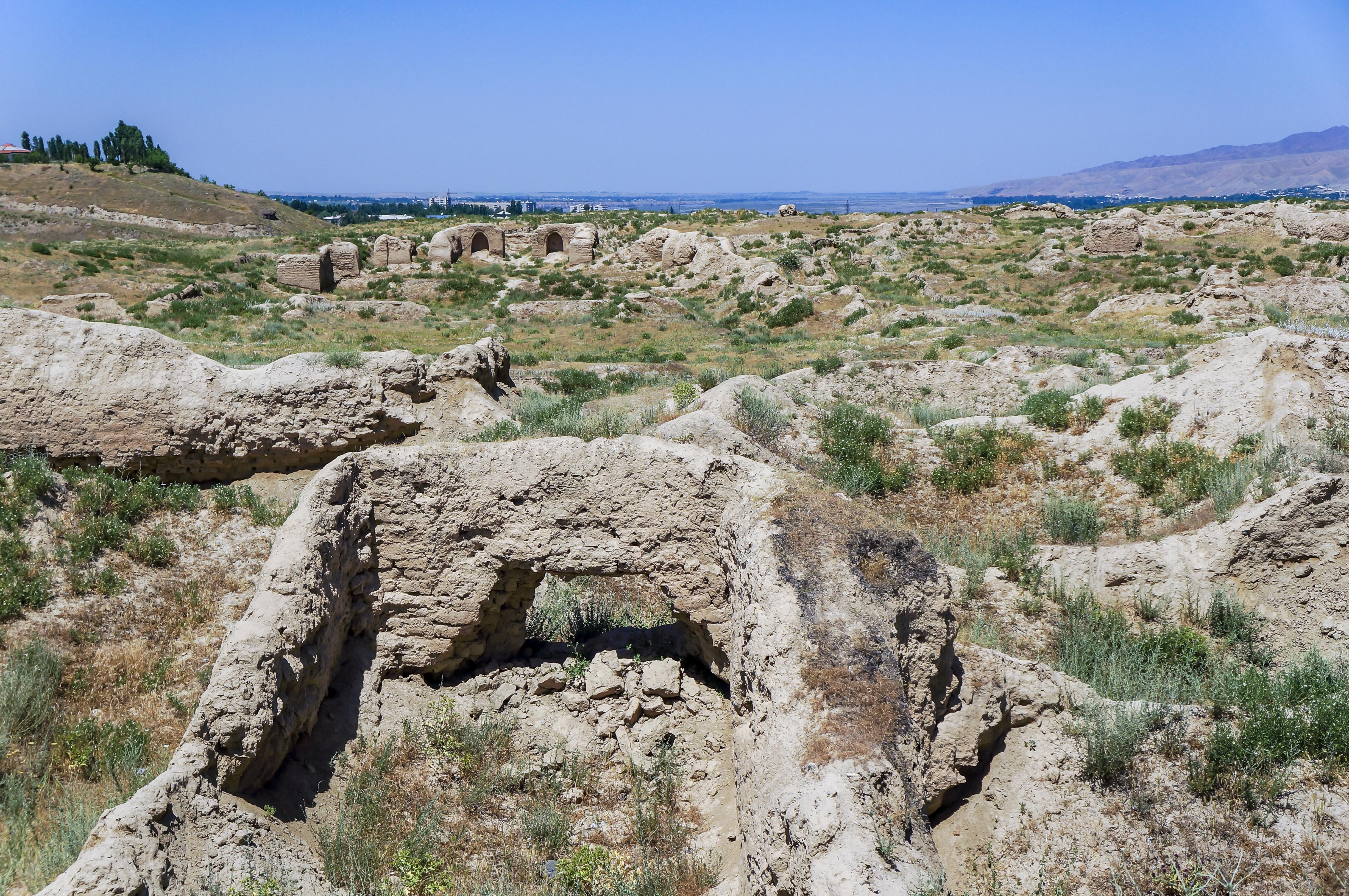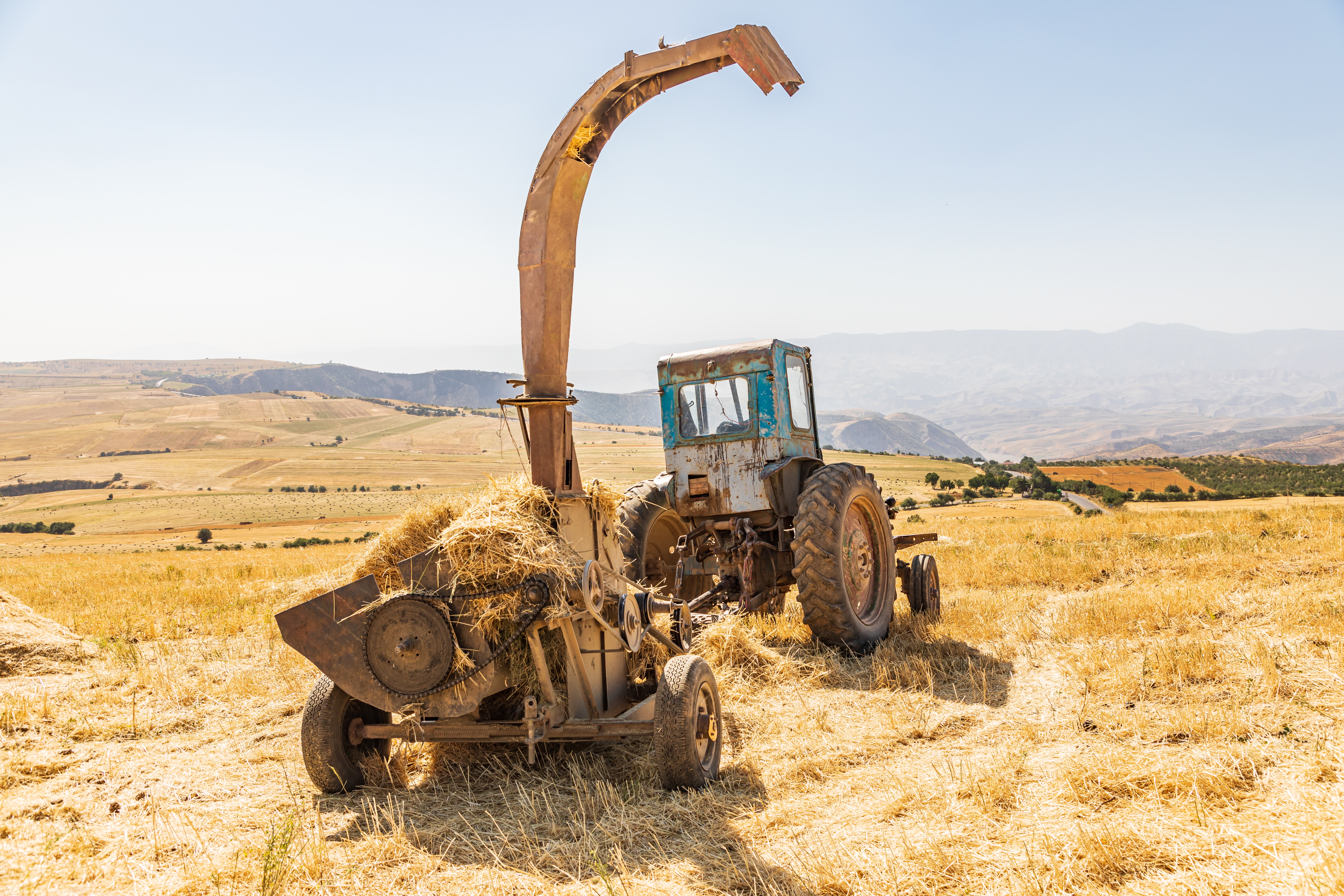Proto-urban Site of Sarazm

When Sarazm was founded in the 4th millennium BC, its location was no accident. At the westernmost point of modern Tajikistan, it was at the junction where imposing mountain ranges met vast grassy plains. The mountains were rich in mineral raw materials and metal ores, while the plains offered the opportunity for farming. The residents of Sarazm saw the potential in both and they expanded their agricultural land while, at the same time, extracting the natural resources. To support these industries, their urban centre grew.
By the 3rd millennium BC, Sarazm had become an important site for metals like tin, bronze, copper, and lead. But rather than just trade the raw materials, the city also developed its manufacturing capabilities, and began to make goods like ornaments, ceramics, and tools. It started to trade these items not just with neighbouring cities, but across Central Asia. There's evidence that Sarazm's network was so vast it stretched as far as Turkmenistan, Siberia, Mesopotamia, and maybe even to the Indian Ocean.
The trade brought wealth, and it brought cultural exchange. Sarazm grew into a rich proto-urban settlement with a sophisticated social structure and its own style of architecture. As well as residences to support up to 3000 people at its apogee, there were also decorated monumental buildings alongside the workshops and granaries that supported the city's commerce. Sarazm was certainly one of the most sophisticated urban centres in Central Asia at the time - perhaps even the first to adopt the elements of town-planning that we associate with more modern cities.

It's not clear what led to the decline of Sarazm, but we do know that it was gradually abandoned sometime between the middle and end of the 3rd millennium BC. Some theories suggest it was because of a mass migration, an epidemic, or because of military attacks. The site was then lost for thousands of years until it was accidentally discovered by a villager in 1976. Excavations began in 1979, uncovering the foundations of buildings and numerous artefacts, giving us an insight into a fascinating part of history.
Life at Sarazm
To grasp what life at Sarazm used to be like, it is important to understand four aspects: architecture (including residential areas and monumental buildings), the irrigation system, burial ceremonies and workshop and crafts activities. These aspects can tell us a lot about the way of life in the city.

Starting with the architecture, archeologists suggest that remains of buildings found in the site were, in the past, used as workshops, storage units, palaces and religious buildings. The materials used were mainly simple such as adobe, wood, and clayey earth. However, the complex engineering applied to the doors and windows is testimony of advanced ventilation and lighting systems. For the residential areas, most of the buildings consist of multi-room complexes that normally had what is believed to be a kitchen, living room, storage area and a fenced courtyard where crafts were produced. Back then, the residential complexes were not owned by one family, but shared between multiple families living together. Houses also had religious functions as many of them were found to have altars. For public life, Sarazm was found to have three main monumental buildings: a communal granary, a religious building, and a palatial complex.
Life at Sarazm revolved around two main activities: agriculture and crafts. It is believed that agriculture played an important role in the proto-urban lifestyle as the irrigation system found on site was extremely sophisticated and advanced. This is due to two types of irrigation being applied. One of the systems is the most simple one where agriculture was conducted in plains near the river, while the other consisted of terrace irrigation in which the water was collected from the mountains. The other main activity, crafts, involved works made out of ceramics, semi-precious stones and metallurgical production. The crafts found on site point to Sarazm being one of the biggest manufacturing centres of the 3rd millennium BC and show evidence of exchanges and interactions over long distances. This hypothesis is also supported by the fact that some crafts in the city use resources such as seashells, that could only be found more than 1500km away.

Finally, burial ceremonies in Sarazm were believed to be simple. During the excavations there were no signs of the existence of large necropolis or cemeteries. Smaller burial sites were found containing three bodies, a woman, a man and an adolescent. Around the woman’s skeleton, different types of crafts and beads were found, including some adorning her hair and arms. Although experts say the burial site is similar to Turkmenistan’s necropolis, the rounded enclosure walls are closer in style to the funerary customs of the Eurasian steppes.
Sarazm once stretched for about 50 hectares, with a population of about 3000 people at its peak. These days most of what remains of the city is buried underground, but excavations have revealed some remarkable discoveries. More than a dozen areas have been dug up by archaeologists and they've found the foundations of major buildings and the layout of ancient residences and workshops, as well as artefacts including ceramics and precious jewels. Some of these excavations have been left open for visitors to see, with information signs explaining the details of life on the site 5000 years ago.
How to get there
The Site of Sarazm is located on the western side of Tajikistan, and is around five kilometres from the Uzbekistan border. If coming from Uzbekistan, you'll need a valid visa and documents. The site is located near a road, so rentals and transportation by car is possible, but very difficult since rental options are very scarce in Tajikistan. There is no known direct transportation to the site that is site-sponsored, so travel by taxi is one of the most common and cheap options available.

How to Visit
Since there are a handful of excavation sites to look at, you can expect a visit to take about an hour. There is no designated housing at the site, so most tour offerings that visit the site are bus bookings that bring you to multiple sites, among which includes the Site of Sarazm. Food and admission to the sites are the only inclusive costs to these tours. The closest lodging town that has several options is Panjakent.

